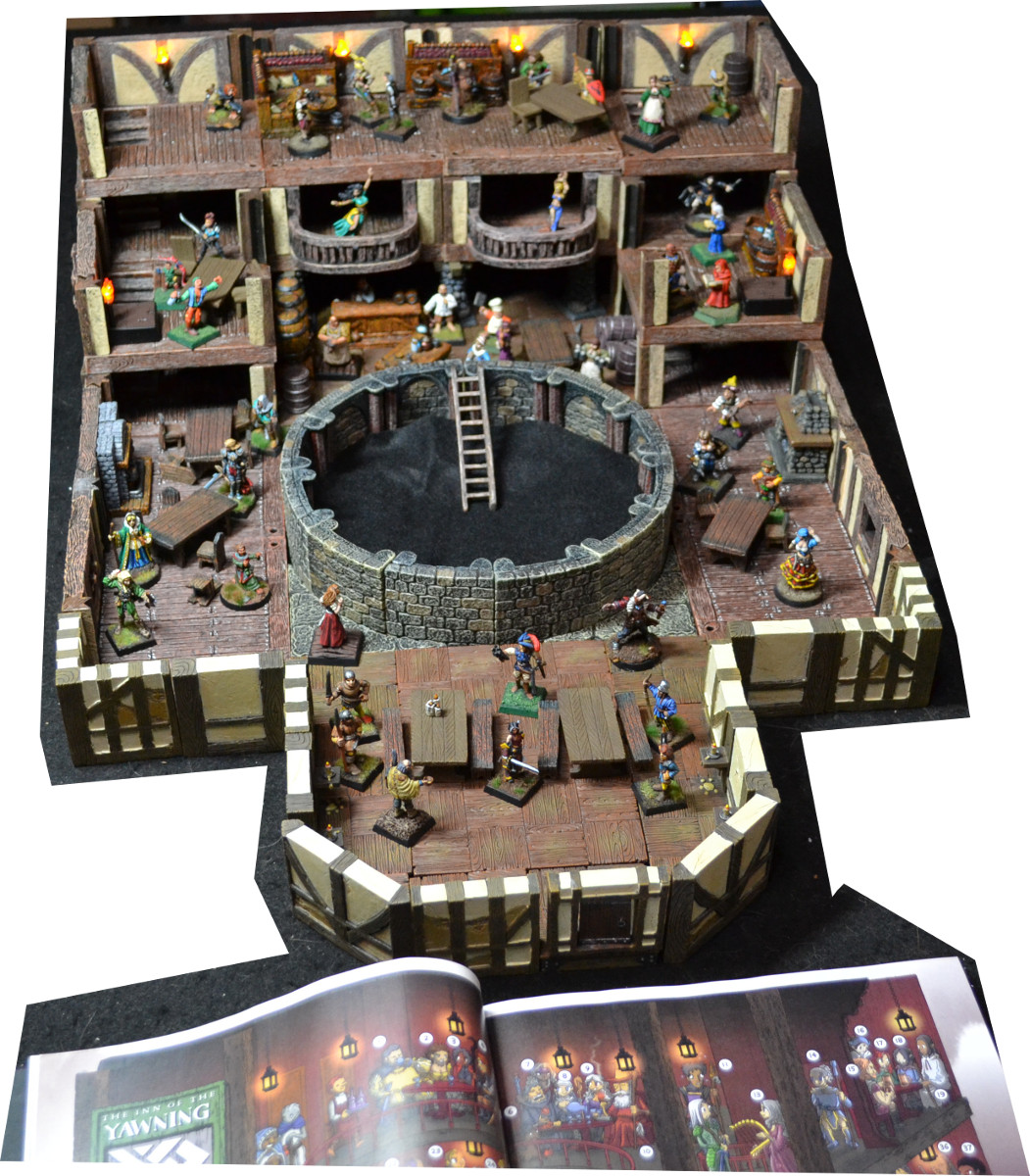We use miniatures and scenery, but do not use a grid (mostly). I never use a lined grid or mat to draw scenes on - I always use terrain. Some of that terrain comes with a grid - like master maze from Dwarven Forge or some of the pieces I build with Hirst Arts, or a few of the 3d printed pieces we use. We convert everything to inches of movement and use tape measures or measuring sticks. Particularly for outdoor scenes, I appreciate the aesthetic scene of no grid lines visible. In the last few years I have also incorporated a lot more elevation into my scenes.
I try to depict everything in the scene in 3d. However, I sometimes have to use a stand-in like this half-column actually represents a small dais, that kind of thing.
I sometimes build opening scenes before the players arrive, but generally, I do not build scenes ahead of time. I have the luxury of a big game room with my terrain and miniatures surrounding the table in cabinets. Sometimes with the help of my players I can assemble scenes very quickly - usually more quickly than DMs I have played with who draw on a grid.
We build the dungeon as it is explored.
We do use minis for non-combat situations.
Running fights through the city are done using city buildings and a "rolling" scene where when a miniature leaves one edge of the table they emerge on the other edge. When the party splits up I handle it either by constructing a scene on another game table or dividing the big table between the two scenes.
I may sound elitist, but please understand - I absolutely would not play this way without a dedicated gaming space. If I had to travel for a game I would certainly use a gaming grid and markers and I am sure it would work great. I don't think I could give up minis though. It also helps that I have been painting and collecting scenery and miniatures for over 40 years. I am pretty much out of space, but I keep cranking stuff out.
Earlier during lockdown we used Zoom and I had a camera (phone) set up on a tripod to capture scenes. It had the added advantage of allowing me to frame a scene in the picture. However, I much, much prefer in-person gaming. I found running games over two hours on Zoom pretty exhausting.
Interestingly, I run a Traveller game for myfar flung friends on Zoom and it is almost entirely ToTM.







